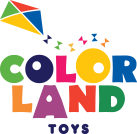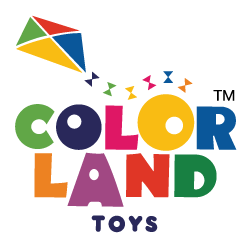8 Significant Benefits of Puzzles for Early Childhood Development
Puzzles are a popular and difficult activity for both young children and adults. Puzzles allow people of all ages to work toward a common goal while literally piecing together a story or narrative. Large-piece puzzles are popular among small children due to their fun shapes and bright colours, but they also provide a variety of developmental benefits, allowing children to learn new skills while playing.
Cognitive Advancement
Cognitive learning is distinguished by comprehension, idea organisation, and application of knowledge through choice and evaluation. When children play with puzzles, they learn the power of choice and strategy by recognising and thoughtfully understanding how pieces fit together to complete a larger picture. Children's puzzles feature colourful pictures of zoo animals, vehicles, numbers, and alphabet letters. Playing with puzzles for children helps them understand how themes interact with one another and fit into the world around them.
Development of Fine Motor Skills
When playing with puzzles, children must grasp pieces of various shapes and sizes and manipulate them to fit precisely into a cutout shape or slot. This procedure may entail sorting and testing various shapes until the correct one is found. This task helps children develop small muscle movements and hand and finger dexterity.
Eye-Hand Coordination
Playing with puzzles requires children to learn to make their eyes and hands work together to find the right piece while developing fine motor skills. When a child uses the "guess and check" method to find the right piece, his or her eyes, brain, and hands work together to identify the piece, grasp it, work with it to make it fit, and choose a new piece if the first one isn't right.
Memory
When putting together a puzzle, children must rely heavily on their ability to recall which shapes go together to form the picture. If a piece does not fit, the child will put it aside but must remember its shape and colour in relation to the rest of the puzzle.
Independent Play
Puzzles for children are a great way to encourage independent play. It's an activity that doesn't require adult supervision and can be enjoyed without the company of others. This can help children learn to entertain themselves, which is especially important when they are young and constantly seek adult attention. They learn to find ways to play and stimulate themselves, as well as the joy of some private, quiet time, by playing for short periods of time on their own.
Confidence
Completing a puzzle gives a child a lot of confidence, especially if they did it all on their own. It instils in a child a sense of competence and accomplishment. As a result, it is critical to provide age-appropriate puzzles to children. The puzzles for toddlers should be difficult but manageable on one's own. A child who battles and struggles with a puzzle will become frustrated and eventually give up. They'll also be less likely to pick up a puzzle the next time.
Relaxation
Building puzzles is such a fun and relaxing activity that many adults enjoy it as well. It relieves stress, promotes mindfulness, and can help calm an anxious child. It is also an excellent activity for unwinding after an active play session.
Span of Attention
Have you ever noticed that when a child assembles a jigsaw puzzle, they sit still for a few minutes longer than usual and appear to be lost in their work? This activity is excellent for getting a child to focus their entire attention without being distracted, and it can gradually train a child to concentrate for longer and longer periods of time. Many other activities allow a child to start and stop whenever they want. A puzzle for toddlers, on the other hand, is not complete until every piece has been assembled. This provides motivation for a child to continue until the task is completed, as well as a sense of accomplishment.
Puzzles are a fun and educational way to challenge children's strategic thinking while teaching them life skills. Jigsaw puzzles are available for all ages and typically consist of cut out shapes that fit into a base. These shapes may include pegs that are easier for very young children to grasp and place in specific locations. Sliding puzzles, which are cases that hold picture pieces divided into squares with an empty space, can be more difficult and usually appeal to older children. There are also various types of 3-D puzzles, such as Rubik's Cubes, that either come together to form a standing structure or come in the form of an object with moving pieces.






 +971 50 150 4446
+971 50 150 4446